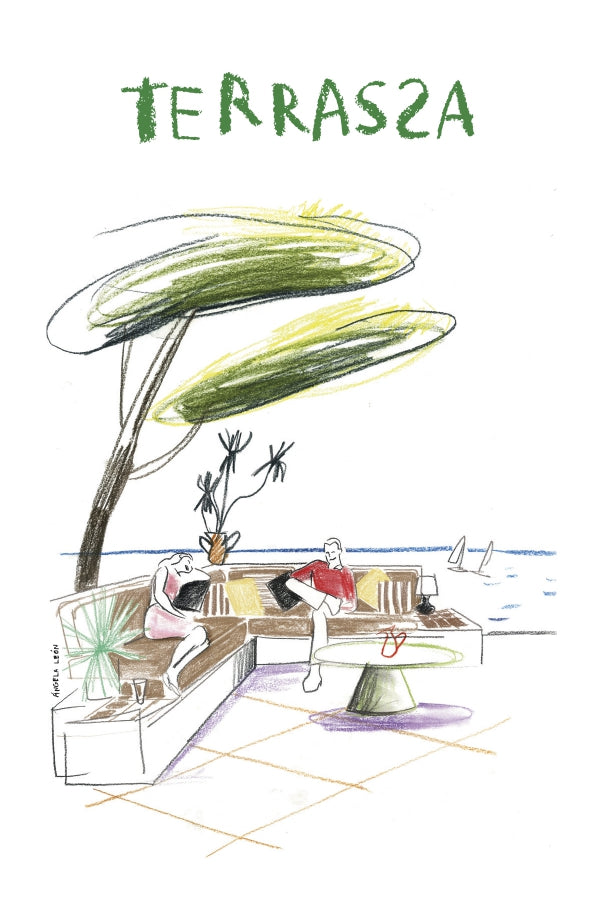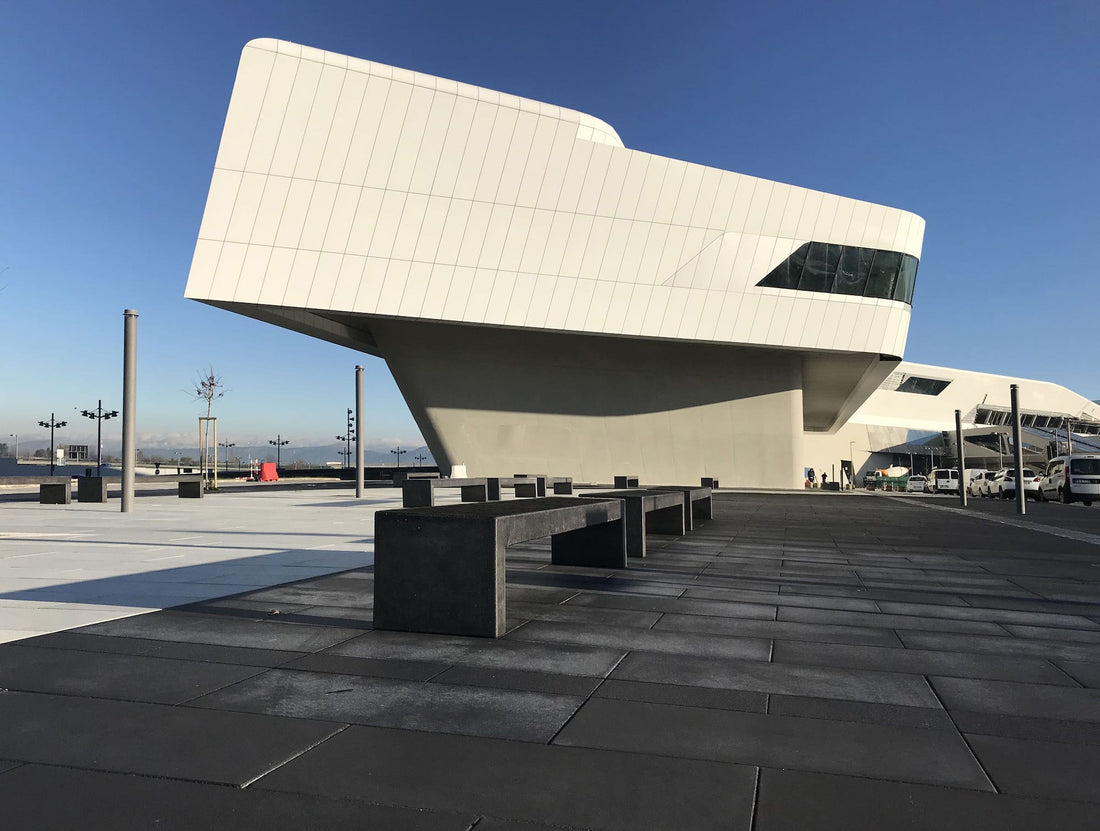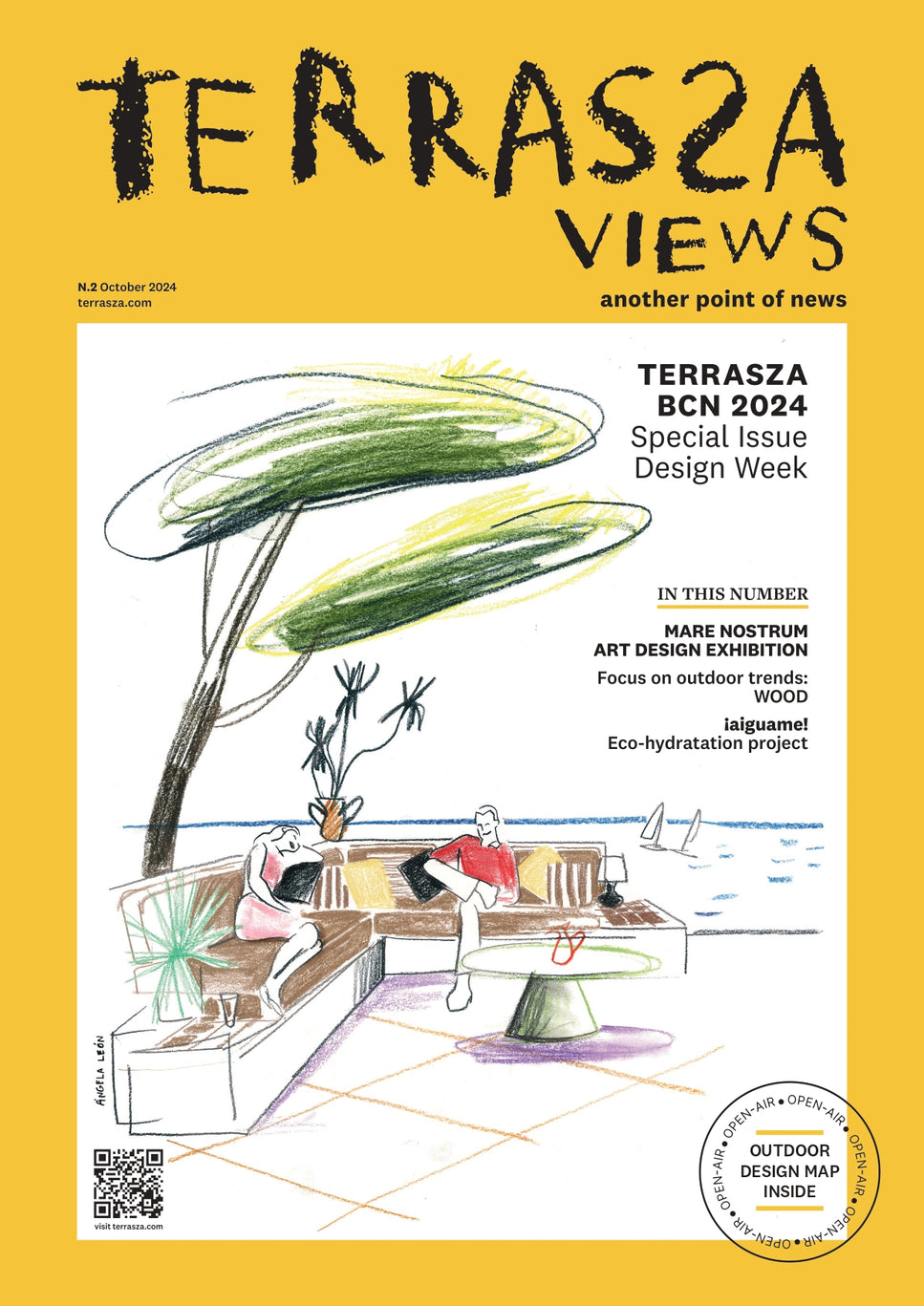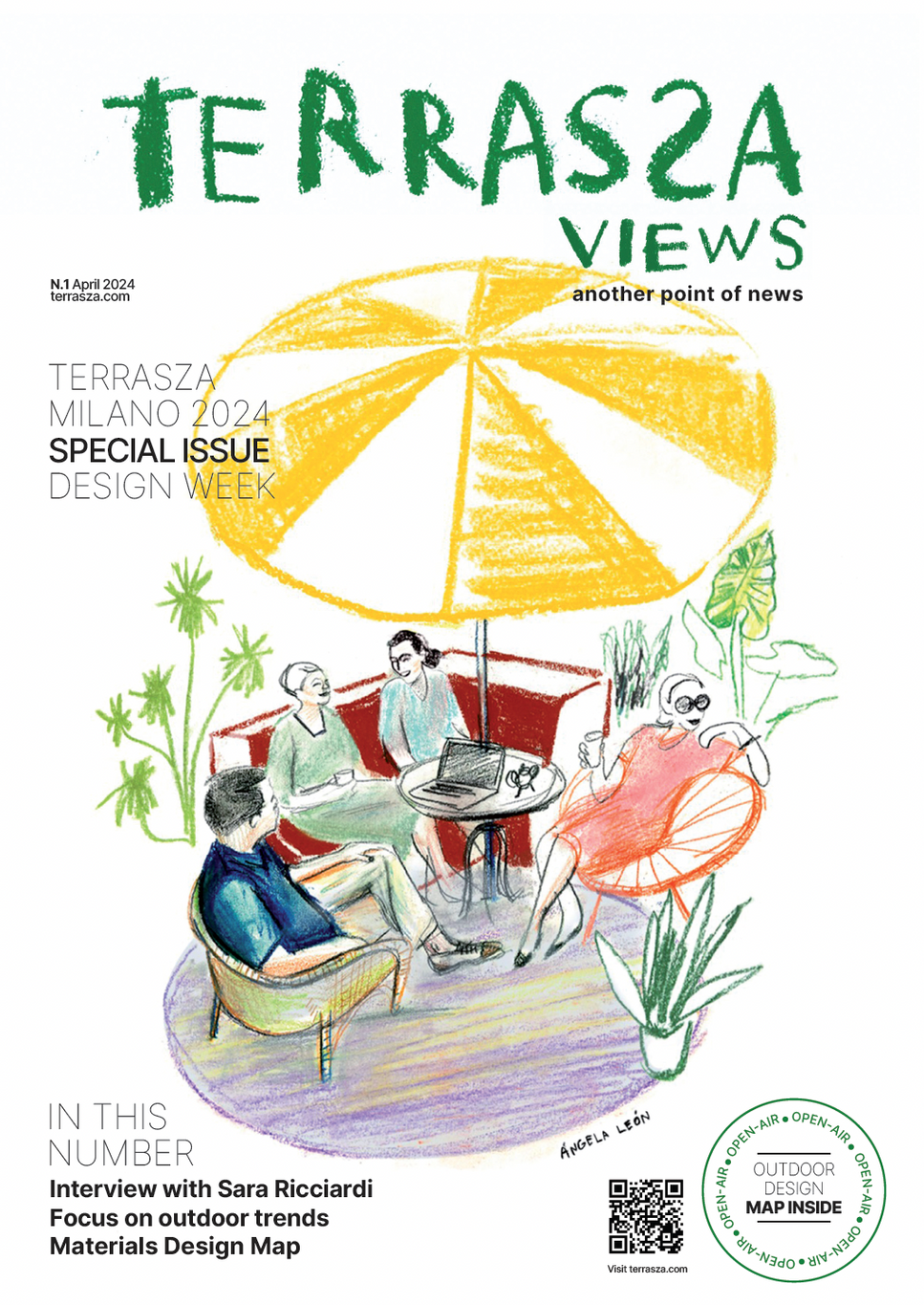What do Rimini's waterfront designed by the Benedetta Tagliabue – EMBT studio, the black bench for Afragola Station designed by Zaha Hadid Architects, and the via Sparano project in Bari by TStudio have in common?

They are just a few of the references for Viscio Urban Design, a company based in Apricena in the province of Foggia, which has been a leader for over thirty years in the design and production of urban furniture made from reconstituted local stone.

Viscio recycles waste from Apricena's Madrepietra to create a composite material consisting of over 70% aggregates and a binder (cement and water), which is used to create various products.
Madrepietra from Apricena is a sedimentary limestone extracted in Puglia at the foot of the Gargano. This extraction area is the largest in Southern Italy and the second largest in the country after Carrara. Comprising 96% calcium carbonate, it achieves exceptional levels of compactness and resistance to weathering.

Madrepietra ranges in color from beige to ivory to pink, depending on the variety, often featuring fine, sinuous veins that characterize its surface. Its material performance has made it a prominent choice for both interior decoration and external artifacts, such as a colonnade on the first noble floor of the Royal Palace of Caserta, numerous buildings in Rome, the church of San Giovanni Rotondo designed by architect Renzo Piano, and the Apple Center in Cupertino by Norman Foster.

Thanks to significant experience gained over the years and collaborations with designers and architects, Viscio Urban Design can guarantee both standard and customized solutions. In addition to bespoke urban furniture projects, for which it provides technical support at every stage, the company has recently developed the photoluminescent bollards RecycALL, designed by Alessandro Canepa, Tiziana Di Sipio, and Sara Priore.

Selected by the ADI Design Index 2023 and nominated for the Compasso d'Oro 2024, these bollards can also serve as seats. They enable the recycling of local aggregates, reduce production and sales costs, "illuminate" at zero cost, lower CO2 in the air, and furnish any urban space with a fully customizable product. This is all possible thanks to reconstituted Madrepietra, which, unlike natural stone, has lower costs, is much more versatile, equally durable, and can be restored in case of breakage or vandalism.

By incorporating glass microparticles that emit light when exposed to an external energy source, the products can emit light in the dark as if powered by a natural battery. The cylindrical supporting structure, designed to capture the maximum amount of sunlight and artificial light, provides stability and allows for complete functional and formal customization of the final product, making it adaptable to both contemporary and historic spaces.

The "cap" of RecycALL is a thin dome that reduces the amount of luminous crystals while maximizing their luminous efficiency.
The versatility of RecycALL, which can be easily standardized for mass production, also extends to the possibility of alternating the bollard element with a planter element, to suit different contexts and settings. Ground anchoring is also available upon request. Transport and installation are always handled by the company and managed by qualified personnel, in full compliance with all safety regulations.

The use of high-quality materials and products that fully meet the Minimum Environmental Criteria (CAM) – the environmental requirements defined by the Ministry of the Environment and Energy Security for various procurement phases, aimed at identifying the best environmental solution throughout the lifecycle – along with expert designer consultation and the reliability of a technologically advanced structure, make Viscio Urban Design a benchmark in urban furniture.







